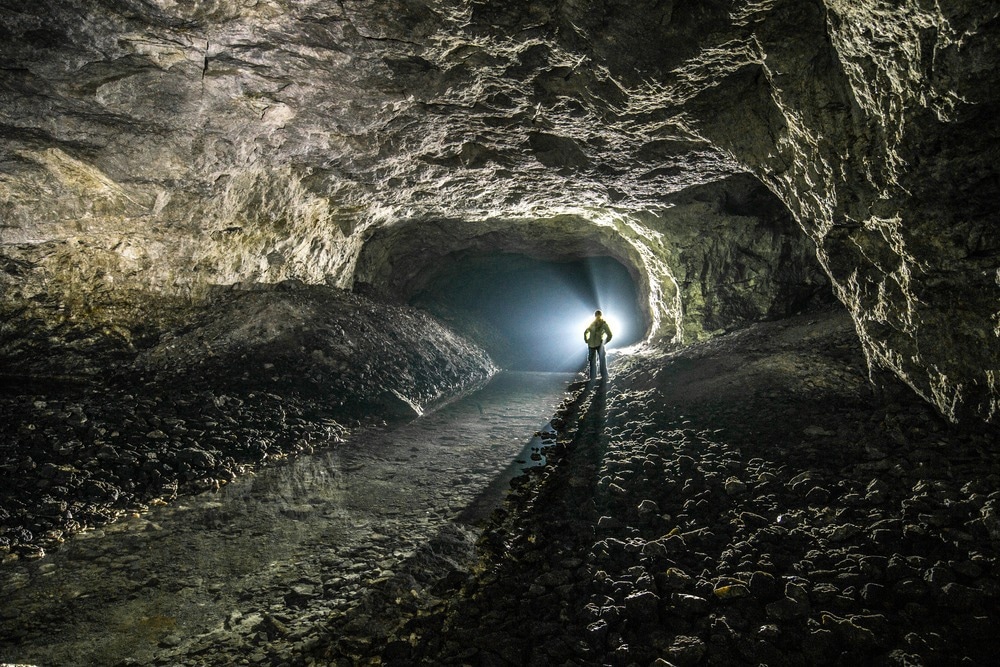In a recent article in Nature Communications, researchers introduced an innovative, fully autonomous sensing platform based on triboelectric nanogenerator (TENG) technology. This platform aims to offer a sustainable, maintenance-free solution capable of continuously monitoring wind speed, toxic gases, temperature, humidity, and pressure within underground mines, thereby significantly enhancing real-time environmental awareness and safety assurance.

Image Credit: Marianna Ianovska/Shutterstock.com
Background
Underground mines pose substantial hazards related to air pollution, gas buildup, dust, and temperature extremes, necessitating continuous and precise environmental monitoring systems. Existing sensors often depend on power supplies vulnerable to physical damage, and their maintenance is labor-intensive and costly.
Airflow conditions influence the dispersion of hazardous gases and dust, emphasizing the importance of accurate wind speed measurement. Traditional wind sensors and pollutant detection devices often suffer from high power consumption, limited durability, and difficulty in deployment within complex tunnel layouts.
The advent of triboelectric nanogenerators offers new opportunities in this context. They can convert mechanical energy from environmental stimuli into electrical energy efficiently, enabling self-powered sensing and energy harvesting solutions. These qualities position TENG-based systems as promising candidates for revolutionizing underground mine safety and environmental monitoring.
The Study
The core of the study involves designing and fabricating a self-powered sensing platform (TESS) that integrates multiple TENG modules. The wind speed sensor employs a non-contact, curved-edge turbine activated by airflow within the mine tunnels. This turbine is supported by precise mechanical components, including tungsten shafts, ceramic bearings, and 3D-printed supports, all arranged within a thoughtfully designed airflow system that ensures uniformity and stability.
The turbine’s rotation induces triboelectric effects captured by the TENGs, producing electrical signals proportional to wind speed.
To validate performance under harsh conditions, experiments were conducted within a sealed environmental chamber that simulated high temperature and humidity typical of underground mines.
The chamber was equipped with heating, humidification, and cooling systems, allowing the researchers to assess the sensor's stability and durability over extended periods. The electrical performance was characterized using precision instruments, and the power generated was tested for the capability to sustain sensor operation and data transmission over months.
In addition to wind sensing, the platform includes low-power sensors for gas detection (targeting gases like CO, NO2, and NH3) and environmental parameters such as temperature, relative humidity, and pressure.
The sensors and TENGs are interconnected via a low-power wireless communication system based on LoRa protocol. An optimized power management system ensures that the collected data can be transmitted periodically without external power sources, utilizing the energy generated by the TENGs.
The entire assembly—comprising energy harvesting, sensing, data processing, and wireless transmission—is constructed in a compact, durable form factor designed for easy installation and minimal maintenance, even in challenging underground conditions.
Results and Discussion
The results demonstrate that the TENG-based wind sensor exhibits an ultra-low start-up wind speed as low as 0.32 m/s, outperforming traditional turbine-based sensors. The device displays excellent linearity in measurements across a broad airflow range from 0.32 to 9 m/s, providing stable and accurate data suitable for mining ventilation needs.
Power density measurements reveal that the Mixed-Mode TENG can produce up to 16.36 mW/m2 at wind speeds around 4 m/s, offering sufficient electrical energy to sustain the sensor and wireless data transmission components.
Long-term testing in simulated underground conditions confirmed the system’s robustness; vital components retained high performance over more than three months of operation, even amidst high humidity, dust exposure, and temperature fluctuations.
The platform's energy harvesting capacity allows it to operate autonomously, eliminating the need for external power sources or frequent battery replacements. The platform accurately monitored environmental parameters in real-time, including dangerous gas concentrations, which are critical for early warning systems.
Field tests in underground tunnels validated the system’s performance, showing it effectively captured airflow dynamics and pollutant levels, demonstrating its potential to serve as a comprehensive safety monitoring solution.
The study also highlights the importance of the system’s modular and scalable design, suggesting it can be extended to monitor additional environmental factors or deployed in other hazardous environments, such as urban utility tunnels or transit systems.
Conclusion
This work showcases a pioneering approach to underground mine safety by integrating triboelectric nanogenerator technology into a fully autonomous environmental sensing platform. The TESS system offers reliable, real-time measurement of wind speed, noxious gases, and ambient conditions and operates sustainably over long periods without external power or frequent maintenance.
Its robust design demonstrates resilience against harsh underground conditions, significantly advancing over conventional sensor systems. The ability to wirelessly transmit critical safety data provides miners and safety personnel with timely information, enabling proactive measures to prevent hazards and improve overall mine safety management.
Source:
Liu L., Shang Y., et al. (2025). Self-powered sensing platform based on triboelectric nanogenerators towards intelligent mining industry. Nature Communications 16, 5141. DOI: 10.1038/s41467-025-60418-9, https://www.nature.com/articles/s41467-025-60418-9